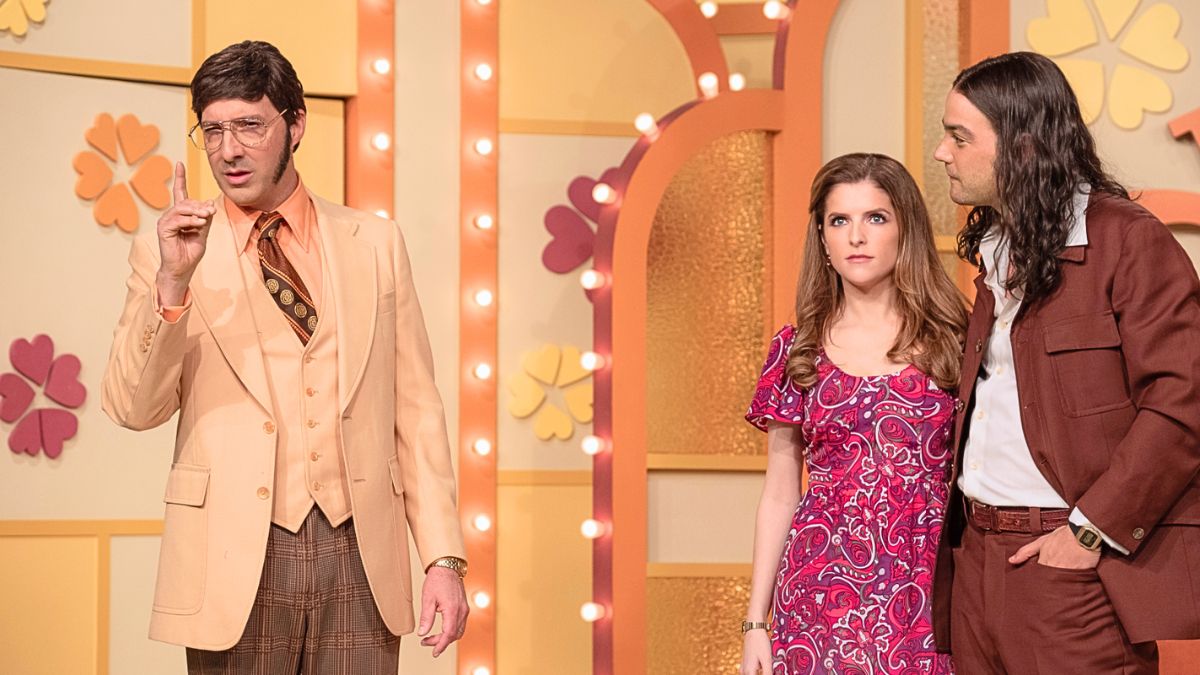Anna Kendrick’s directorial debut Woman of the Hour is shining a light on one of America’s most prolific serial killers, Rodney Alcala (Daniel Zovatto), known as The Dating Game Killer after appearing on and eventually winning ABC’s dating game show in the 1970s. Kendrick plays Cheryl Bradshaw, the aspiring actress who picked Alcala as the winner, only to ditch him after getting serious “creepy” vibes upon getting to know him backstage.
The film is receiving rave reviews from critics and audiences alike for its firm grasp on the societal structures that enabled Alcala’s actions and how it swaps the typical fascination of true crime thrillers with their serial killer subjects with a more grounded, way less sympathetic approach that paints them as the unimpressive narcissistic charlatans they are. It takes a pretty blind society to allow and enable such a disturbed man to be that nonchalant and carefree to the point of shamelessly going on television amid a killing spree.
Although Kendrick and screenwriter Ian McDonald take several creative liberties with Alcala’s story, including entirely fictional characters and scenarios, Woman of the Hour still concludes with the typical factual title card that informs viewers about what would come to be of The Dating Game Killer.
People were particularly stricken by the authorities’ incompetence in stopping Alcala. He was already a registered sex offender and an ex-convict by the time he signed on to appear on The Dating Game, having spent time in jail twice for assaulting two girls, an 8-year-old and a 13-year-old. He was most prolific, however, during 1977 and 1978, around the time he met Cheryl Bradshaw. Alcala was eventually arrested in 1979 when a 15-year-old hitchhiker, Monique Hoyt (transformed into the character of Amy, played by Autumn Best, in the film), managed to escape him by convincing him she wanted a romantic relationship with him.
But that was not the end of Alcala’s story. He was let out on bail and killed at least two more women before he was tried and sentenced to death in 1980. That verdict as well as a second trial with a similar outcome were both overturned on technicalities, but Alcala was never allowed to go free again. His third trial, concluded in March 2010, resulted in a third death penalty. In 2013 he was sentenced to an additional 25 years to life in New York for the murders of 23-year-old flight attendant Cornelia Crilley in 1971 and the daughter of prominent nightclub owner, 23-year-old Ellen Jane Hover, in 1977.
“So you telling me…survivors was reporting Rodney Alcala for 10 years already before he appeared on the game show and then later was arrested, let out on bail and then killed 2 more women, then finally arrested again and almost got an acquittal? The —- man [sic],” one person bewilderedly commented on X. “With every prolific serial killer there’s always more than one instance where the cops catastrophically dropped the ball. Absolutely ridiculous,” another protested. In the film, we see multiple instances of police disregarding accusations against Alcala.
Although Alcala was ultimately tried and charged for a portion of his crimes, it is estimated he victimized over 130 people during his lifetime, some of which could have been saved had women been believed and the justice system been more efficient. That’s the true tragedy of Women of The Hour.
